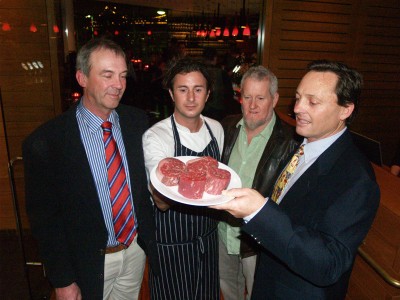
By Jon Condon, The Land
Selection pressure for intra-muscular fat driven through both Breedplan recording and progeny carcase testing has been one of the contributors to Rangers Valley’s premium brand extension.
“We have always seen those extreme high marbling performers coming through our production system occasionally, in a random fashion, but the difference today is that they’re being seen with a lot more frequency,” said Rangers Valley livestock manager, Richard Eldershaw.
“The focus within the Angus seedstock industry on IMF (essentially, marbling), plus growth over the past 10 to 15 years is now producing a lot more of these high-marbling cattle in the herds we have identified and prioritised in our purchasing. The increased regularity of these elite carcases has given us the confidence to develop an extension to our normal marketing, based around these carcases.” Mr Eldershaw said.
Rangers Valley recently hosted some of its elite performing feeder cattle suppliers to a visit to Brisbane, where they had the opportunity to sample some of the product during a dinner at celebrity chef, Matt Moran’s upmarket Aria restaurant in the city heart.
One of these was Southern Victorian commercial Angus breeders Steve Brain and wife Susan, who mate 1200 cows each year on their property Boona, near Mumbannar. The Brains have supplied Rangers Valley with feeder cattle for the past 15 years, and consistently rate in the top 5pc of the company’s suppliers on performance. They also earned CAAB’s top supplier compliance award last year.
The Brains attribute a significant part of their herd’s high marbling performance to their membership of the Team Te Mania genetics and marketing program, developed by Mary and Andrew Gubbins.
“The great attribute of the program has been in sourcing carcase data from progeny passing through the meatworks, and basing their seedstock genetic selection on actual carcase merit, rather than estimates,” Mr Brain said.
“Carcase data from a couple of thousand steer progeny each year has been used to drive those selection decisions. That concept made so much sense to me, and it was why we initially joined the Team Te Mania program. Previous to that, too many selection decisions were being made on fashion or beliefs, or EBVs, rather than actual outcomes.”
In 15 years, the genetics in the Brains’ herd has improved dramatically in a variety of traits – not just marbling. Carcase yield, daily gain and other growth measurements have also shown strong statistical improvement.
The Brains use little or no AI in their herd, instead applying natural mating using bulls available through the Team Te Mania lease program. These herd sires are within the top 10pc within the Angus breed for desirable traits.
Another of the top performing Rangers Valley livestock suppliers in Brisbane was Jon Jackson, from Toolong, near Warrnambool in Eastern Victoria. Mr Jackson is also a Team Te Mania progeny test member.
He and wife Karen run 1000 cows in a split annual calving on their heavy-carrying coastal country.
“We have always put some selection pressure on marbling – even at the expense of growth in earlier days, because back then all the heavier marbling cattle tended to be smaller in scale. Now though, it is possible to maintain marbling while getting more growth into the cattle. The overall breeding objective is really coming together,” he said.
“I’d agree with Steve in that today, we can have the best of both worlds, in terms of high IMF, combined with superior growth.”
With the increased accuracy possible through the progeny testing work, the rate of genetic progress was in fact increasing, rather than losing pace.
“Producing more of these extreme high marbling cattle is part of where we’re working towards. It’s helping take Angus beef to another level,” Mr Jackson said.
While weaning, supplementation and other management interventions could also impact on ultimate marbling performance, genetics still played a major part in hitting the targets.
“If they’re not going to marble, they’re not going to marble. Above everything else, the genetic building blocks have to be there,” he said.
Most of the Toolong steers enter the Rangers Valley feeding pens at 12 months of age averaging about 470kg, so they are given every chance to express their IMF potential. Particular sire lines are increasingly throwing the extreme high marblers that will help drive the new Rangers Valley brand project.
Article and photos courtesy of The Land





